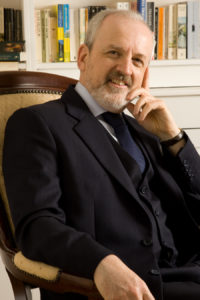 There’s a general view amongst magicians that the effect is always more important than the method, particularly when you are talking about entertaining lay people. And there’s a logic to that opinion, because if you are doing it right, the audience should be so engaged and entertained by the plot and presentation of the magic, that the last thing they should be bothered about is how it is all achieved. So if you follow the logic of this train of thought, then the best and most direct way, for instance, to have someone simply think of a card and for you to be able to name it, is by using a stooge. In plot terms it’s direct, there’s no sleight of hand or complicated mental gymnastics to worry about, and so in a world where plot is everything, this method cannot be beaten.
There’s a general view amongst magicians that the effect is always more important than the method, particularly when you are talking about entertaining lay people. And there’s a logic to that opinion, because if you are doing it right, the audience should be so engaged and entertained by the plot and presentation of the magic, that the last thing they should be bothered about is how it is all achieved. So if you follow the logic of this train of thought, then the best and most direct way, for instance, to have someone simply think of a card and for you to be able to name it, is by using a stooge. In plot terms it’s direct, there’s no sleight of hand or complicated mental gymnastics to worry about, and so in a world where plot is everything, this method cannot be beaten.
Yet how many of us would resort to this form of deception? It feels almost like cheating, as if there is some invisible line that has been stepped over into a realm where this type of means to an end is unacceptable. It may be the most direct method to achieve the plot, but in other ways it fails to satisfy the performer and possibly also even the lay public.
I think that the reason this way of approaching magic does not always work is because there’s a question of credibility. Often referred to as the ‘Too Perfect Theory’, there’s a perception that some plots are so impossible looking, so perfect, that a spectator is left with no option but to surmise, possibly correctly, how it is achieved.
TV magic suffers a lot from this absence of credibility. When Dynamo makes a borrowed mobile phone penetrate onto the inside of a glass drinks bottle, there are many lay people who will just shrug and say it was a fix, or that the camera cut away at a vital moment, or that it was all a camera trick! It doesn’t matter to them whether they are right or not, it’s just that with little or no mental wriggle room, they dismiss the magic out of hand with simplistic solutions.
So sometimes plots need to be engineered in order to at least create the illusion that a ‘non-cheats’ method is being used. In the case of the aforementioned mind reading of a thought of card, the performer might have the spectator select a card from a deck before putting the name of that card into his mind. The use of a real pack of cards in this way adds all manner of method possibilities and is strangely more satisfying to the lay audience than the purer plot suggested previously.
The truth is, no matter how much we magicians would like the audience to not ever consider the methods behind the magic, most of them still do to a greater or lesser extent. After all, what’s the first thing spectators often say when you do one of your little miracles? “How on earth did you do that?” immediately comes out of their mouth.
For this reason, while plot should be the predominant factor in any given trick, how it is achieved may also be a factor to take into consideration. Making it too pure and impossible might have the opposite effect to that which you intended. Creating a little smoke and mirrors by way of a method that allows some room for discussion, might get you more credit than you think. Plus when you use it, it’ll feel more ‘honest’ to you too!
